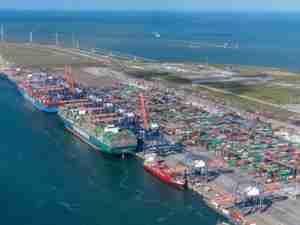But then there are cases like BR-163.
The narrow two-lane highway that winds hundreds of miles through Brazil's farm belt has long unpaved stretches that turn to mud during the rainy season. Trucks carrying soy, cotton and corn sometimes have to wait wait weeks to load at congested ports.
Jaime Binsfeld, head of grain sales for an agricultural trading firm in the farming city of Lucas do Rio Verde, says the cost of transporting corn to port often eats up 60 percent of the revenues his company gets for selling it.
"Brazilian farmers have major advantages, but we've got a huge bottleneck: logistics," Binsfeld said.
Brazil's next president, who will be elected in October, must address the country's woeful infrastructure for the economy to keep growing at or near its strong pace of recent years. But heavy bureaucracy, slow environmental licensing and fiscal constraints mean that the ambitious investment plans put forth by leading candidates may well fall short.
The clear front-runner, ruling party candidate Dilma Rousseff, has vowed to invest more than $550 billion between 2011 and 2014 not only to improve Brazil's agricultural export capabilities but also prepare the country to host the 2014 World Cup and 2016 Olympic Games.
But it's unclear how Rousseff will overcome the same legal and financial obstacles faced by her former boss and Workers' Party colleague, outgoing President Luiz Inacio Lula da Silva.
Even with 75 percent popularity ratings and a fragmented opposition, Lula has been unable to overhaul cumbersome regulations and significantly improve Brazil's infrastructure.
His government has set aside hundreds of billions of dollars on a flagship investment program to boost the country's infrastructure but critics say it has been too slow in carrying out the projects, which are often been insufficient to meet Brazil's rapidly growing needs.
Brazil spends nearly twice as big a share of its gross domestic product as the United States on transportation, boosting the cost of moving products from mines, fields and factories and creating a major obstacle as it tries to take advantage of rising demand for its commodities in coming years.
"This is a historic problem in Brazil that is not going to go away just with a change of government," said Samir Keedi, an economist with commerce consultancy Aduaneiras.
"Given the position we're after eight years of Lula, I don't see it being much different after four years of Dilma."
A Bumpy Road
The most frequently used form of transportation in Brazil is also the most expensive: nearly 60 percent of cargo is moved by trucks.
But only 12 percent of all Brazil's roads are paved. Here in the farming state of Mato Grosso, lines of 18-wheel trucks slow traffic to a crawl on two-lane roads that were never designed for such heavy loads of cargo.
Accidents are so pervasive that rural residents are often seen sweeping up grain dumped by trucks after wrecks.
"It happens all the time," said Lucas Alexandre, 15, the son of farmers who joined others picking up corn from a truck accident. "We can feed it to the chickens, it's good for us."
Industry leaders say the key is expanding Brazil's patchy railway network, which still doesn't reach parts of Mato Grosso, the heart of its farm country.
Decades of insufficient investment by sluggish state-run companies left Brazil with a much smaller rail network than other emerging-market peers in the BRIC group -- made up of Brazil, Russia, India and China -- and even than its economically weaker neighbor, Argentina.
The government plans to cut Brazil's reliance on road transport by almost half over 15 years. while boosting rail transport to 35 percent from 25 percent, and nearly doubling river and ocean freight by expanding already clogged ports.
Some companies are wary enough of the government's ability to execute these plans that they have










